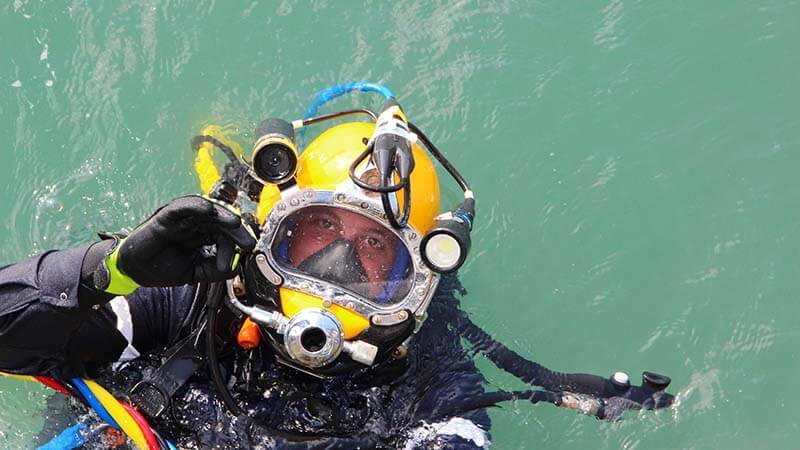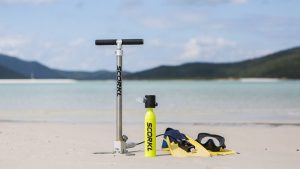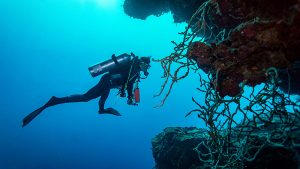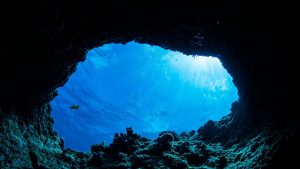If you are a diving enthusiast, then you know that the snorkel is the most crucial of all scuba diving and snorkeling gear. However, have you ever stopped and wondered how a snorkel works?
A snorkel supplies you with air when your face is submerged in water. Since you do not have gills like a fish, you need a means to supply you with dry air, and a snorkel is this means. For the snorkel to work, it blocks water from entering. At the bottom, it has a purge valve that helps you get rid of any little water that may get in.
Table of Contents
Keeping Water Out – How A Snorkel Works

Just how does a dry snorkel manage to keep the water out while all you are surrounded by is water, water and more water? It may look like the simplest and perhaps even the most underrated piece of snorkeling and scuba diving items. However, it plays a very big role.
You can buy a dry snorkel on Amazon.com. There, you will get more variety and better prices. Besides, you will also be happy to read reviews left by other users.
If you are in a hurry to go to the beach or elsewhere and don’t have time to read everything, watch the video below. It explains how snorkels work very well.
You can use your snorkel in many water activities. These include snorkeling, free diving, spear fishing, and fin swimming.
In all of these, you will most certainly need a snorkel. However, most underwater activity lovers do not really know how a snorkel works, which makes most of them shy away from using it.
Here, you will get the basics of how a snorkel works. I believe that by the end of this article, you will have gotten the general understanding of how this gear works. This knowledge in turn will give you all the confidence that you need while using it for your underwater activities.
Two most important parts of a snorkel
First, a snorkel has two very important parts. These are the valve or hinge on top of the snorkel. The work of the valve is to lock up tightly when your snorkel submerges, thus keeping all water out.
The second part is the purge valve that is located at the bottom of the snorkel. The function of this part is to allow you blow water out in case some finds its way into the tube. Definitely, there will be some water to blow out, not much, but water all the same that you do not need in the snorkel tube.
When you get under the water, the snorkel seals the water out completely. While different snorkels work in just about the same way, there are special snorkels that are made for freediving. Such snorkels do not need purging since they do not let water into your mouth at all.
Most people ask whether it is possible to breathe underwater as if you are on dry land. The answer is yes; but only with a full face snorkeling mask that you can buy on amazon.com.
The full face snorkeling mask also has a snorkel tube. However, rather than stick this tube to your mouth, it attaches to the mask at the top. This tube brings air into the mask.
When you submerge underwater, the tube has a valve just like a traditional dry snorkel that locks up, preventing water from getting in the mask. Even if water gets into the mask, you will find that there is a purge valve.
Where are a traditional snorkel mask will keep you breathing under water for a few minutes, maybe two or three, a full face snorkeling mask will keep you breathing much longer than that. It is important that you do not exceed the recommended time under water.
Different Types of Snorkels and how they work
Generally, in the search to know how a snorkel works, you should also know about different types of snorkels. There are three main types of snorkels. These are:
- Dry snorkels
- Wet snorkels
- Semi-dry snorkels
All the above three types of snorkels perform the basic work of letting you breathe while underwater. However, although they function similarly, they have a few minor differences.
Understanding each type and how they work can really improve their effectiveness and increase your confidence and safety while you are underwater.
Here is an in-depth overview of each type and how they function.
Dry Snorkel
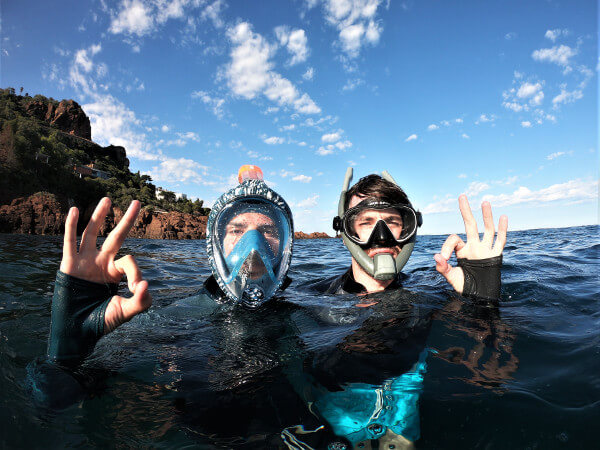
Dry snorkels have really gained popularity in the recent past. Someone might ask why they are called dry snorkels.
Well, the reason is pretty obvious. Dry snorkels do not let in water when you are submerged unlike the conventional snorkels. This is because they are designed with a unique seal or valve at the top that prevents water from getting in.
Therefore, whether you are submerged in the water or you are just floating on the surface, a dry snorkel will never allow water in. This makes them a perfect choice for novice snorkelers and divers since it helps them concentrate on the adventure without panicking.
They are also a great choice for people who want to enjoy a flawless experience while exploring the underwater world.
How does a dry snorkel work?
The clear plastic shield covers the eye and the nose. The snorkel itself goes into your mouth.
A dry snorkel is fitted with either a hinge or a valve at the top. The hinge or valve is further equipped with a special floatation mechanism.
Once the top part of the snorkel is submerged in the water, the mechanism prompts the valve or the hinge to close the air pathway creating a seal. This seal ensures that water does not get inside the tube.
However, it is still possible for some water to find its way inside a dry snorkel. This mostly happens when the mouthpiece comes out of the mouth or it is improperly positioned while you are underwater.
To take care of this, manufacturers of dry snorkels have further fitted them with purge valves. These valves expel all the water out of the tube once you exhale deeply.
The biggest advantage of a dry snorkel is that it allows you to enjoy an uninterrupted snorkeling. This is because you do not have to keep on stopping your experience to expel water.
It is also a great choice for the beginners who are mostly a little bit scared of water. This snorkel gives them the confidence they need to concentrate on their adventure rather than worry about removing water.
Disadvantages of a dry snorkel
However, a dry snorkel does not come without its fair share of some disadvantages. One, it limits you to only a few underwater activities.
A dry snorkel is only effective for activities that are near the water surface such as snorkeling and shallow diving.
If you wish to explore deeper through free diving or spear fishing, a dry snorkel will not be of much help.
This is because the trapped air in the tube increases your buoyancy, which works against you when you try to go down. A dry snorkel also tends to increase drag while underwater.
Wet snorkel – how a snorkel works
A wet snorkel is basically the simple conventional snorkel. It is a J-shaped tube with an open top end. Due to its open-end design, a wet snorkel definitely lets in water when it is submerged in the water.
So why still use a wet snorkel if it lets water in? You just need to know how a snorkel works.
People who want to explore deeper water depths such as free divers and spear fishermen prefer wet snorkels due to their low buoyancy. Wet snorkels are usually low in volume, have fewer attachments and less drag.
This way, a wet snorkel allows the user to go as deeper as they would wish to with just a single breath of air. It all depends on how long one is able to hold their breath until they come back again to the surface to inhale.
With a wet snorkel, you must expel the water in the tube in order to clear it every time you resurface. Newbie users might find this snorkel unpleasant to use since they mostly end up choking on the water. However, experienced divers and spear fishermen find it better because it allows them explore deeper.
Semi-dry Snorkel
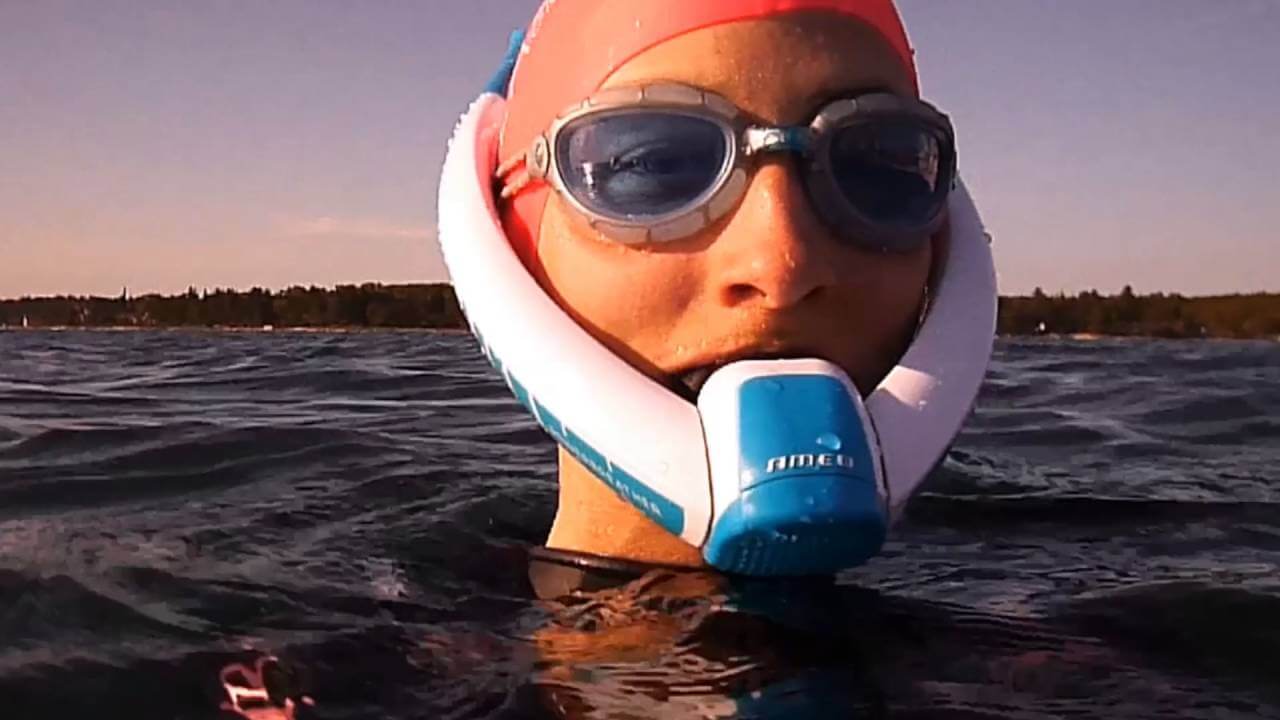
This type of a snorkel just like its name suggests it bears features of both the dry snorkel and the wet snorkel. This simply means that it also works partly as a dry snorkel and partly as a wet snorkel.
When you are near the water surface, a semi-dry snorkel prevents the splashing water from getting inside the tube. However, unlike a dry snorkel, a semi-dry snorkel does not keep all the water from entering in.
Instead of a hinge or a valve that dry snorkels are fitted with, semi-dry snorkels are fitted with angles and slits instead. The work of these two features is diverting water away from the snorkel when you are near the surface. Once you are fully submerged in the water, the snorkel lets in water.
One may then ask why use this kind of a snorkel anyway. A semi-dry snorkel is more beneficial to scuba drivers who want to save the air in their scuba tanks while diving near the water surface.
In addition, a semi-dry snorkel is not bulky and does not increase buoyancy like a dry snorkel. This means that it does not hinder a scuba diver from exploring more depths like a dry snorkel does.
The angles and slits mechanism in semi-dry snorkels is beneficial in that they prevent water from getting inside the tube while you are diving near the surface.
Conclusion
As to the question of how a snorkel works, you now have the answer. It is not complicated, but the most important thing is to not stay underwater for too long. If you would like to dive deeper and stay as long as you like, what you need is a scuba diving mask, a BCD for scuba diving and all the other gear for deep diving.

